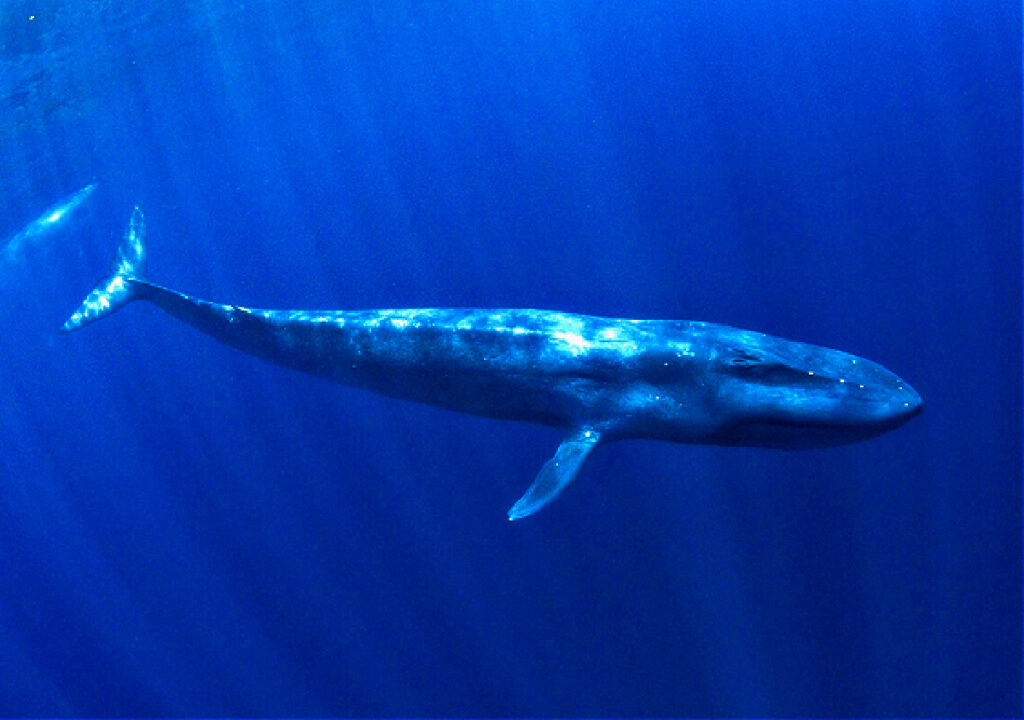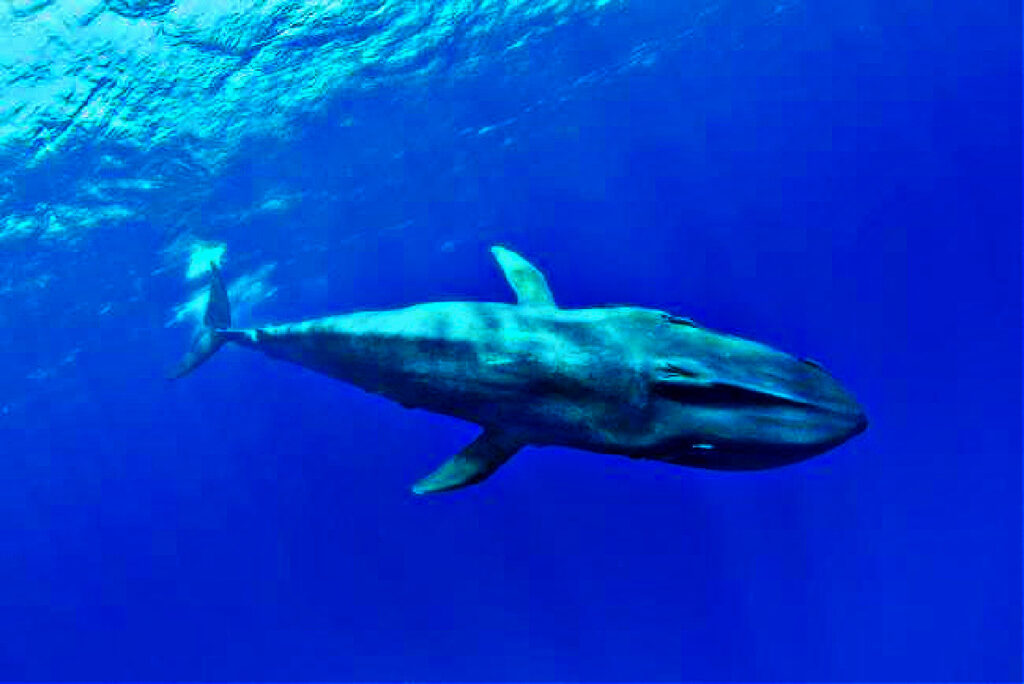Ben Knight: University of New South Wales Newsroom
Almost two decades of whale recordings suggest the movements of the pygmy blue whale are affected by climate cycles.
You might think it’d be easy to track an animal as large as a blue whale. But don’t let their size fool you – they’re incredibly hard to study using conventional methods.
Not only are these large aquatic mammals quite shy and reclusive, they are also rather rare and can roam large regions of the ocean. But these elusive creatures also like to sing, and scientists can study their melodies to learn more about their behaviour.
Researchers from UNSW Sydney have been using a network of underwater listening devices to keep tabs on pygmy blue whales off the coast of Western Australia. Their recent study, published in Frontiers in Marine Science, analysed nearly two decades of continuous underwater recordings to see whether their calls correspond with environmental changes.

They found while the number of whale call detections changed year to year, the variability was linked to the climatic phenomenon, La Niña. The findings suggest climate cycles may influence the migration of the pygmy blue whale in the eastern Indian Ocean, which may have important implications for their conservation.
La Niña is the cooling phase of the naturally occurring El-Niño-Southern Oscillation (ENSO) cycle which causes variation in sea surface temperatures across the Pacific – though it is also known to have far-reaching effects on weather and ocean conditions worldwide, including the Indian Ocean.
“We found the number of detections was related to the strength and timing of La Niña events, suggesting it may be an important factor influencing their movements,” says Gary Truong, lead author of the study and a PhD candidate at UNSW Science.
“More specifically, we found the number of song detections during La Niña years to be up to 10 times more than those in El Nino or neutral years, which indicates these whales respond to changes in climate cycles.”

The emerging climate threat
The findings may have important implications for the management of pygmy blue whales in the region, which have been historically threatened by commercial whaling activity.
“Hunting once drove the species to the edge of extinction, and while they are now recovering slowly, their numbers haven’t bounced back strongly,” says Professor Tracey Rogers, senior author of the study and an ecologist from UNSW Science.
“From a conservation perspective, they are considered data deficient because we know relatively little about them, which is why studies like these are important.”
More information about the whale’s movements can help managers predict when more whales will migrate and help other ocean users to plan their activities.
“Commercial shipping and looking for oil and gas can be detrimental to the whales when they are present,” Mr Troung says. “Managing those activities, particularly over the more active migration years, can help reduce the impact on these animals as they swim past.”
Read more: Bomb detectors picking up more blue whale songs in Indian Ocean
While they’re no longer in decline, the researchers say climate change also looms as a growing threat to the blue whales. As the ocean warms, it could change the availability of food sources such as krill, which the researchers suspect may be the main driver behind whether the whales undertake migration.
“Not only are we seeing the impacts of climate change on the terrestrial landscape, but also on the oceans and the animals within them,” Professor Rogers says. “The science suggests we will see more frequent La Niña events. This will likely affect food availability for these large whales and perhaps put more stress on recovering population.”
The researchers say more research is needed to understand the impact of food availability changes during the La Niña years. They also plan to analyse more recent data to determine whether the recent triple dip La Niña event further impacted whale calls.
“The climate is changing quite rapidly, and the question is whether animals like the pygmy blue whale can adapt to these conditions in the long-term,” Mr Truong says.



